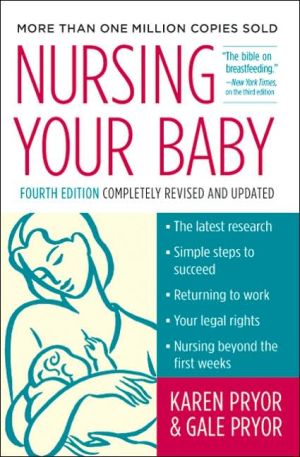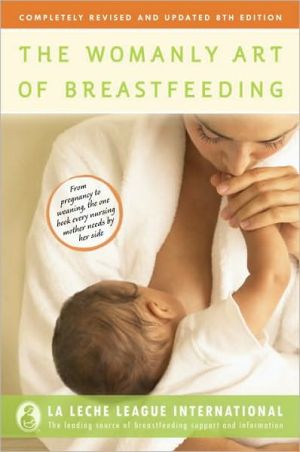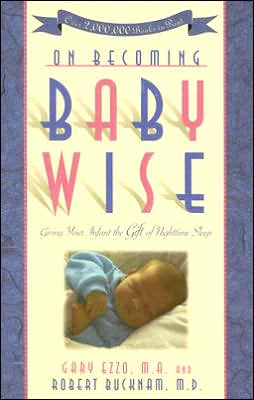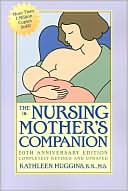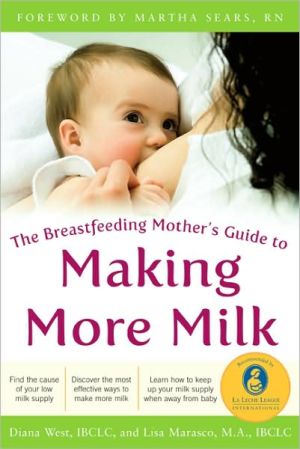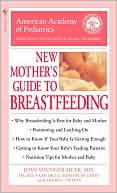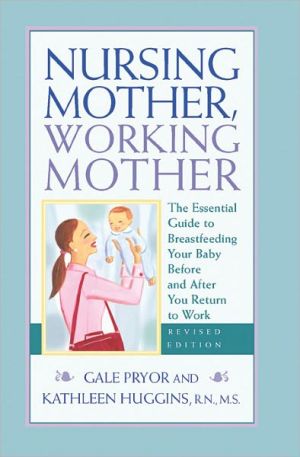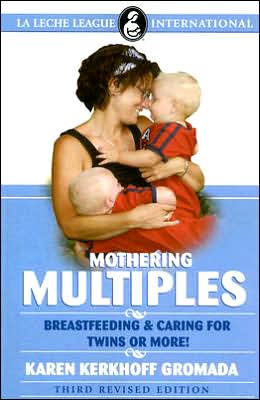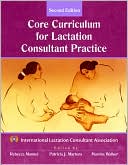Nursing Your Baby
For more than 40 years, mothers have depended on the wisdomand warmth of Nursing Your Baby. Now authors Karen Pryor and her daughter Gale Pryor have revised and updated their classic guide for today's generation of women. New information includes:\ \ Up-to-date studies on health benefits for breastfed infantsand breastfeeding mothers\ Tips for getting the best start on breastfeeding during thefirst hours, weeks, and months after birth\ Breastfeeding advice for working mothers\ Legal rights as...
Search in google:
For more than 40 years, mothers have depended on the wisdom and warmth of Nursing Your Baby. Now authors Karen Pryor and her daughter Gale Pryor have revised and updated their classic guide for today's generation of women. New information includes: Up-to-date studies on health benefits for breastfed infants and breastfeeding mothers Tips for getting the best start on breastfeeding during the first hours, weeks, and months after birth Breastfeeding advice for working mothers Legal rights as a nursing mother Choosing and using a breast pump How fathers and families can support new nursing mothers With its unique blend of support, science, and research, this classic guide will continue to encourage mothers to nurse their babies as long as they both desire.
Nursing Your Baby 4e\ \ By Karen Pryor \ HarperCollins Publishers, Inc.\ Copyright © 2005 Karen Pryor\ All right reserved.\ ISBN: 006056069X \ \ \ Chapter One\ The Nursing Couple\ The oneness of the nursing mother and her baby has always fascinated mankind. Like lovers, they are united both physically and spiritually. Unlike lovers, their union lacks the ambivalence and tensions of sexuality. The Egyptians portrayed their chief goddess, Isis, with the infant Horus at her breast. Christianity reveres the Madonna, the image of mother and infant, as a symbol of pure love. The Dalai Lama, spiritual leader of Tibetan Buddhism, speaks of compassion and altruism as first learned at a mother's breast, as the mother gives of herself to her child. Artists through history and across geography have been inspired by the nursing couple to convey, in stone and clay and paint, two souls who are one.\ It is brief, this unity. In most cultures, the baby is weaned in a year or two -- or much less -- and his world expands beyond his mother's arms. She then becomes a part of her child's life, sharing its center more each day with other people, other interests, eventually yielding her place of primacy entirely. Yet for all its brevity, the nursing couple is an intense relationship. Mother and child share a rapport so complete that it can exert a profound effect on both. Without this rapport, this mutuality, breastfeeding may cease. Nursing a baby is as much about the giving and taking of self as it is about the giving and taking of milk.\ Nursing a baby is an art; a domestic art, perhaps, but one that, like cooking and gardening, brings to a woman the release and satisfaction only creative work can give. The author Anne Morrow Lindbergh wrote, "When I cannot write a poem, I bake biscuits and feel just as pleased." Nursing gives the same sort of satisfaction and joy. Successful nursing mothers tend to feel that breastfeeding is special, and are thankful for the experience.\ Breastfeeding is special for the baby, too. While drinking from a bottle is a passive experience, nursing at the breast is a participation sport. Babies can throw themselves into it with an endearing, almost comical gusto. British novelist Angela Thirkell offers an observation of a grandmother watching her daughter nursing her new baby: "Edith was sitting in a low chair, her baby in her arms, while the said baby imbibed from nature's fount with quite horrible greed. Her face became bright red, a few dark hairs were dank with perspiration, one starfish hand was clenched on a bit of her nightgown . . . she was victualling herself as far as her adoring grandmother could make out for a six weeks' siege at least." Nobody ever felt that way about a plastic bottle.\ The Rewards of Nursing\ Before a woman nurses a baby, she may assume that the chief reward of doing so is a sense of virtue, the knowledge that by choosing to breastfeed, she is doing the right thing for her baby's health. The evidence of the long- and short-term benefits of breastfeeding to both mother and baby's health and development is indisputable. In fact, for many reasons detailed in the following chapters, breastfed babies in the United States are 20 percent less likely to die before their first birthday; the longer a baby nurses, the lower the risk. If all babies in the United States were breastfed, reports a large study published in the May 2004 issue of Pediatrics, the journal of the American Academy of Pediatrics, approximately 720 infant deaths could be prevented each year.\ And yet enduring good health is just one of the gifts of breastfeeding. The nursing mother may be proud that her baby thrives, but her daily reward lies in the peace, even the bliss, of the nursing experience. Nursing feels good. It brings physical comfort to both mother and baby, as it eases the baby's hunger and floods his mother with oxytocin, the hormone for peaceful and loving feelings, and prolactin, the milk-making hormone that also seems to induce a sense of calm in the mother.\ The obvious and lavish love a nursing baby displays for his mother is a special sort of joy. Being in close contact with each other is tremendously rewarding. Nursing babies love to gaze at and touch their mothers. Mothers are gratified that they are just what their babies want. A nursing mother tends to feel that her baby is not a job or a chore, but her little friend, a member of the team. This partnership is the essence of the nursing relationship, an equal exchange of effort and satisfaction.\ As any nursing mother would tell you, another tremendous reward is that breastfeeding, once learned, is a lot less trouble than the chores involved in feeding a baby with formula and bottles. A breast is always warm, ready, and available, at home or away, while formula must be bought and mixed, and bottles washed and prepared, packed and carried.\ As any working nursing mother knows, breastfeeding comforts with the assurance that no matter how much of each day her baby is with a substitute caregiver and no matter how much her baby adores that caregiver, only Mama can nurse the baby; only Mama has the warm breast full of milk.\ Breastfeeding is the fastest way to lose weight and get back in shape after pregnancy, as nursing a baby devours as much as 600 calories a day, the equivalent calorie expenditure of thirty laps in a pool. Nursing your baby causes your uterus to contract after birth, flattening your stomach far sooner than if you were bottlefeeding. During pregnancy the body stores special fat reserves in the hips and abdomen that are intended to be used up during milk production. Lactation draws on these energy supplies. If breastfeeding does not occur, however, these special fat deposits can be difficult to reduce. Losing weight gained during pregnancy is welcomed by most women, but of critical importance for those with gestational diabetes in order to decrease their risk of developing lifelong diabetes ...\ \ Continues... \ \ \ \ Excerpted from Nursing Your Baby 4e by Karen Pryor Copyright © 2005 by Karen Pryor. Excerpted by permission.\ All rights reserved. No part of this excerpt may be reproduced or reprinted without permission in writing from the publisher.\ Excerpts are provided by Dial-A-Book Inc. solely for the personal use of visitors to this web site. \ \
